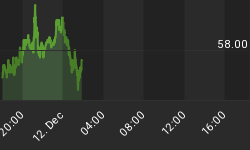Many investors in the precious metals community operate from the perspective that there is no real difference between gold and silver; that both are monetary assets, with silver simply being a less expensive, more abundant, and more volatile version of gold. There is some truth to that, although I think it is important to note that the differences. If one understands the differences, it becomes easier to understand when silver may be overvalued, and why the gold/silver ratio could rise greatly. For these reasons, I personally invest much more in gold and gold stocks than in silver.
The big difference between gold and silver is that in modern times -- and I'll define "modern times" as being post-Civil War USA, or after 1865 -- silver has only been able to serve as money when government forces it to serve as such. Consider, for instance, the Coinage Act of 1873, which had the effect of putting the United States on a gold standard -- not a bi-metallic standard. The result of this was that silver prices declined, at least until the Bland Allison Act was passed in 1878 that restored a bi-metallic standard and required the US Treasury to buy silver. The Bland Allison Act, pushed by the silver industry and those who wanted cheap money, was passed via Congress overriding the veto of then President Rutherford Hayes.
Of course, cheap money is never a solution, as hard money advocates and those versed in Austrian economics can attest. And so, when the onslaught of cheap money led to Panic of 1893, President Grover Cleveland was faced with no other option but to return to a gold standard only to bring stability to the monetary system. The price of silver declined shortly after Cleveland revised monetary policy accordingly.
This situation in the 19th century with silver stands in stark contrast to what happened 100 years later with the gold standard in the 20th century. Many pundits at the time forecasted that once the official link between gold and US monetary policy was severed, the gold price would plummet. Instead, the opposite happened: the bull market in gold in the '70s proved to be extraordinarily powerful, sending gold to new all-time highs. This illustrates how gold, not silver, is true money -- to the point where it can override government decree.
I do hold silver and expect it to appreciate significantly in the years to come; I consider a move beyond $100 to be a reasonable expectation. However, I am less confident in expectations that the gold/silver ratio will contract. If a new international monetary agreement involving commodity-backed money is established, I consider it far more probable that it will be a gold standard rather than a silver standard or a bi-metallic standard. It is for these reasons that I believe those who are looking to hedge against currency devaluation and a breakdown of the international monetary agreement focus more on gold than silver; because silver is better suited for speculation and industrial use, it is an inferior monetary asset relative to gold, and thus silver holders could conceivably benefit less from the shift to a new monetary system than owners of gold.















